- Home
- Allison Brennan
Nothing to Hide
Nothing to Hide Read online
Begin Reading
Table of Contents
About the Author
Copyright Page
Thank you for buying this
St. Martin’s Press ebook.
To receive special offers, bonus content,
and info on new releases and other great reads,
sign up for our newsletters.
Or visit us online at
us.macmillan.com/newslettersignup
For email updates on the author, click here.
The author and publisher have provided this e-book to you for your personal use only. You may not make this e-book publicly available in any way. Copyright infringement is against the law. If you believe the copy of this e-book you are reading infringes on the author’s copyright, please notify the publisher at: us.macmillanusa.com/piracy.
ACKNOWLEDGMENTS
Writing is a solitary profession, but writers need the help of others to make stories come alive. A special thank-you to all the people who helped bring this book to life: Wally Lind, the brains behind Crime Scene Writers, who always has answers to my many questions—or knows where to find them. The experts at Crime Scene Writers, who help me every time I post—especially Judy Melinek, M.D., without whom I would never have gotten these autopsies right. Martha Vasquez with the Bexar County Sheriff’s Office, who helped with so many of the details in this book. And as always, my FBI go-to guy, Steve Dupre. If I got anything wrong—and I probably did—it was my own error.
As always the team at Minotaur Books and St. Martin’s Press helped bring my book to the world, so thank you—and thanks especially to my editor Kelley Ragland and the brains behind Criminal Element, Joseph Brosnan. My agent Dan Conaway and the gang at Writer’s House always keep me sane and focused. Well, at least they try! And lastly, thanks to my family for putting up with my odd hours and even odder commentary.
CHAPTER ONE
Saturday Morning
FBI Agent Lucy Kincaid squatted next to the latest victim of a possible serial killer. The victim had been identified as thirty-four-year-old Julio Garcia, the head chef of a convention hotel in downtown San Antonio.
Beaten then shot in the face. Fast, efficient, brutal. It was a gruesome sight, but Lucy was used to violence.
“I can give you five minutes,” senior crime scene investigator Ash Dominguez said. “Until Walker gives me the thumbs-up, this is still his crime scene.”
Lucy bristled. Ash was doing her a big favor, but the entire situation would have been a whole lot easier if the sheriff’s deputy investigator Jerry Walker didn’t have a chip on his shoulder about the FBI. She honestly hadn’t expected the pushback. The FBI office had a terrific working relationship with both the sheriff’s office and SAPD, but from the beginning of this investigation Walker had made everything more difficult than it had to be.
Besides, he knew she was coming to the scene, it had already been cleared by their mutual bosses. That he’d slipped away irritated her, but she wasn’t surprised. The sheriff asked the FBI to assist shortly after the second murder three weeks ago, and the criminal investigations unit sent their office copies of the reports. But Walker hadn’t followed up or returned her calls. It was clear he didn’t like working with federal agents, but he didn’t have a choice. The orders had come from higher up, and the three murders were almost identical. That fact put these deaths in a whole new category.
Don’t blow it.
Her boss SSA Rachel Vaughn hadn’t actually said those exact words, but she had lamented that there was no one she could send with Lucy to the crime scene, which was now an official joint investigation.
“It’s not that you aren’t capable of running solo with this, Lucy, but you’re still a rookie and it’s a touchy situation. As soon as I can juggle the workload of another agent, you’ll have a partner.”
Lucy shouldn’t need an FBI partner—Walker was supposed to be working with her. She’d reached out to him this morning when she’d learned about the third victim, yet he’d disappeared from the crime scene before she arrived.
She pushed aside interoffice bullshit and visually inspected Garcia’s body. The smashed hands. The gunshot to his face. If the MO from the previous two held, the autopsy would reveal that he’d been hit in the stomach and groin by the same object that shattered the bones in his hands—likely a small sledgehammer or mallet. There were conflicting interpretations of the murders and Lucy couldn’t say exactly what they were looking at. On the one hand it seemed personal; on the other, sexual. Yet again, an act of revenge or retribution. Or even possibly a thrill killing, because the victims were beaten before they were murdered. In fact, they couldn’t even confirm that the killer worked alone—each victim was a physically fit male with minimal or no defensive wounds.
The attention the killer paid to smashing his victim’s hands suggested a thief, that the victims had taken something from the killer. But so far—at least between the first two victims—there was absolutely no connection that law enforcement could find.
This was the type of crime Lucy had the most experience with: violent. What that said about her, she didn’t know—other than she was good at getting into the heads of both killers and victims.
Ash said, “It’s not pretty.”
“I read your other reports,” she said. “Does this victim present the same way?”
“Damn near identical. The killer got up close and personal—several blows to the torso and groin, possibly one to the back of the head. Possible Taser burn on the victim’s shirt”—he gestured—“but it was a contact stun, no cartridge and no confetti.”
Virtually all personal Tasers now have AFID confetti to track to the owner. That put the killer in the smart category. Smart and confident.
But why the stun? It hurt like hell, but wouldn’t keep the victim down. Was it before or after the initial blow? Had the victim tried to get up? Fought for the weapon so the killer used the jolt to stun him long enough to retrieve another weapon?
Except … there was little sign of a struggle. The victim had been found only a dozen feet from his car.
Ash said, “For some reason, the victim pulled over into this parking lot. He got out of his car, left his phone and keys. Then he was attacked. Though no way we can confirm this without an autopsy, he was likely attacked from behind because there don’t appear to be any defensive wounds on his arms. Then whack, whack, whack, the killer used a blunt object similar to the first two murders. I should be able to confirm once I get trace from the autopsy. If it’s consistent, I’m leaning toward a steel mallet with a diameter of between two and a half and three inches, but I can’t tell you exactly what yet.”
“It’s unusual that the focus was on his hands,” Lucy said. Extremely odd. “The groin suggests sexual, but the victims were all fully clothed, and the genitals weren’t mutilated.”
Ash shivered. “I don’t know about you, but getting hit in the balls with a hammer would hurt like hell.” He squatted across the body from Lucy. “You know, getting hit in the balls would bring most guys to their knees. Maybe that was the first hit. There just doesn’t seem to be any reason. Nothing taken, no message, no purpose.”
“You sound like a cop now,” Lucy said. “And there’s always a purpose. We just don’t know why yet.”
She swatted flies from the body and looked closely at the mouth, unable to avoid seeing the brain matter and blood from the close-range gunshot in the face. In the previous murders duct-tape residue had been found on and around the victim’s mouth, but no tape was found at either scene. The killer had taken it with him, likely to avoid it being traced back to him. Tape is a terrific medium to obtain prints, trace evidence, or DNA. Here she could make out the rawness on the skin from the tape being pulled off. If
they could find the tape—was it a souvenir? Did the killer dispose of it between the crime scene and his home? Destroy it? Why duct-tape the mouth at all? The kills had been quick. Not as efficient as they could have been—but was that part of the thrill? To beat a man down, then shoot him?
The killer was smart. Ruthless. Purposeful. Because even though these victims appeared random, there was a purpose. Killers almost always had a reason.
Once Lucy figured out how the victims connected, the motive would be clear, she was certain of it. And if the killer was truly a serial murderer, there would be a connection. While the victims might seem random, there would be a commonality that made sense to the killer. She couldn’t shake the feeling that this was retribution, which meant the killer may be done when he finished with his list. Who was on it? People who had done him wrong? Hurt him emotionally or physically? If that was the case, these three men would certainly be connected—even if it was long ago. Even if they hadn’t communicated in years.
Ash jumped up. “Hey, Jerry.”
Jerry said in a deep southern baritone, “Far as I know, this is still my crime scene.”
Lucy slowly rose from her squat and turned to face BCSO investigator Jerry Walker. They hadn’t met—he had been avoiding her calls—and she assessed him. Tall, broad-shouldered, all around a big guy, though not excessively overweight. Late forties, maybe fifty. He wore jeans and a white polo shirt with a sheriff’s patch on the breast, his badge clipped to his belt next to his sidearm. But it was his well-worn black hat that stood out. He looked like he came from another era. The era where cops hated feds.
“Investigator Walker,” Lucy said. “I’ve been trying to reach you. I’m Special Agent Lucy Kincaid.”
“I’ve been working, ma’am. No time for chitchat.”
She bit back a response that would have gotten her in trouble. Before she could form a more diplomatic comment, Walker continued. “Ashley, the coroner said he was ready to move the body twenty minutes ago but you told him to wait. It’s not getting any cooler out here.”
“Jeez, Jerry, call me Ash,” he said.
“Nothing wrong with Ashley. Good southern name.”
Ash rolled his eyes. “Maybe during the Civil War,” he mumbled. He glanced at Lucy.
Walker noticed the look. “It’s not her call, not yet at any rate,” he said. “Agent Kincaid is simply assisting in this investigation.”
Lucy could see Ash’s wheels turning. He probably regretted letting her get close to the victim—except that she was authorized to work this case.
“Now, ma’am,” Walker continued, “let’s let the good folks from our crime scene unit take care of this poor guy, and we’ll establish some ground rules.”
She wanted to play nice—she had to play nice—and though Walker’s tone was easygoing, his words were not. She’d been lucky in her career that most local law enforcement she worked with didn’t have a problem with the FBI, and up until now she hadn’t had any animosity from San Antonio LEOs. She’d learned from her sister-in-law who’d been an agent for nearly twenty years that such camaraderie hadn’t always been the case, but in her time both working with her training partner in Washington, DC, and then here in San Antonio, she’d made many friends among local police. She really hoped she was wrong about Walker, but she felt like she was under a microscope.
She nodded curtly and forced a smile. “Ground rules.”
He grinned back, though it didn’t reach his eyes, then motioned for her to walk in front of him toward the staging area. She took a last look at the deceased. Julio Garcia. Early thirties, married, had the best part of his life ahead of him. Did he have kids? Had the killer left not only a widow but an orphan? She would find out why his life was cut short so tragically. While Walker flexed his authority, she wouldn’t be chased away.
Though autumn officially started tomorrow and the worst of the summer heat was over, it was still uncomfortable at ten in the morning and she was hot and now irritable. She walked to the staging area with Detective Walker.
“Deputies,” he said to the two first responders, “if you’d be so kind as to finish the canvass. Check for surveillance videos on the highway, if anyone heard or saw anything. I’m right sure the gas station a mile down the road has one, though it would be sheer luck if it caught cars passing on the street, or if our killer or victim stopped there. No neighbors in the area, but check the closest homes for what they saw and heard last night between eleven p.m. and three in the morning.”
“We’re on it, Jerry.”
He waited until they left, then turned back to Lucy. “I understand you’re a rookie.”
She bristled. “Yes, I’ll be here two years come January.”
“I’ve been a Bexar County deputy for twenty-three years, and an investigator for the criminal division for more than half that time. I’ll tell you this, every time the feds have gotten involved in one of my cases, they’ve screwed it up. I said as much to your boss. To be fair, I’ve only had to work directly with your people twice over the years, so I’m going to give you the benefit of the doubt. And the sheriff has a good working relationship with you folks and I know he asked your boss personally to send someone in to assist. He wants me to play nice. It’s not my decision, but I will live with it. However, just to be clear, our respective bosses agreed that I’m the lead. I don’t want any misunderstanding about that, so if you have a problem taking direction, tell me now. Save us both time and headache.”
Lucy bit back her first sharp remark and said, “I have no problem taking direction, Investigator Walker, as long as you have no problem taking my assistance. I have a master’s degree in criminal psychology, and have worked multiple serial killer cases.”
“Psychology,” he said with a hearty laugh. “Might as well consult a psychic to find out who killed these men.”
“With all due respect, the FBI’s Behavioral Science Unit has established clear guidelines based on evidence, victimology, and psychology to help narrow the suspect field.”
He looked humored. “And what does your crystal ball tell you?”
Don’t react. Stay professional. “I’ve read the autopsy reports, viewed the crime scene photos and reports, and read the case notes. I’m up to speed, except on one thing: witness statements.”
“No witnesses. Each of the victims was killed at night in a remote area like this.” He waved his hand around them. They were in the middle of a county park.
“I meant, the wives of the first two victims, the friends, neighbors, colleagues. Your notes were minimal.” She shouldn’t have said that, but she didn’t backtrack. His notes had been basic. Just facts that the women knew about the days leading up to the murders of their husbands. When they left the house, what they were doing, when they planned to return. No known enemies. Ditto from their employers and colleagues. Nothing substantive, and she had more questions. “After reflection, the spouses may remember something else. These men got on the killer’s radar somehow, and when we figure out how we’ll know more. Plus, I want to go deeper into possible connections between the victims.”
“They aren’t connected, Agent Kincaid. It may surprise you, but I’m good at my job.” He looked her up and down. “You have less than two years as an agent. And you’re too young to have come from local law enforcement or the military.”
“I don’t think age has anything to do with competence.”
“But it has everything to do with experience.”
“Is your problem with me that I’m young or that I’m a federal agent?”
“Both, ma’am. Like I said, the feds I’ve worked with mucked up my cases and I have a long memory. But I’m willing to give you a shot.”
“Sounds like I already have two strikes against me.”
“I’m a man of my word, Agent Kincaid.”
She sincerely hoped he was, because she was really tired of games and jumping through hoops with people who were supposed to be on her side—the side of justice.
“Then let me into this investigation. Don’t push me aside as if I don’t have anything to contribute.”
“Well, you can repeat all the groundwork if you want, but I have dug around into the backgrounds of the first two victims and there is no connection between them—and no connection between their wives. Sometimes a crime is exactly what it seems to be: random.”
“This killer has a reason.”
“Could be he’s getting his rocks off. Having fun.”
“He picked these victims specifically. Knew they would be alone. Had the tools with him—stun gun, duct tape, hammer. Premeditated.”
He nodded. “Yes, I’ll give you that.”
“He didn’t stumble upon them and decide to kill them. He picked them out. Maybe initially at random, but he stalked them and knew when they would be alone. Knew their routine, and how to best approach them. He’s smart; first two crime scenes we have no trace evidence to lead us to the killer. No prints, no DNA, no tire prints from another vehicle. I don’t think that it was sheer luck that there were no security cameras at any of the crime scenes. Even the golf course where the second victim was killed, the security cameras were pointed toward the entrance, not the parking lot. I think the killer knew.”
For the first time, Walker looked at her as if she had a brain. That angered her and relieved her.
More flies with honey.
She almost smiled when her brother Dillon’s wise words popped into her head. She’d use the honey as long as it worked, but she wasn’t going to be demoralized or dismissed.
“I pretty much came to the same conclusion, especially since the only thing Billy Joe Standish and Steven James had in common was that they were married, white, and under forty. And now Julio Garcia throws race out the window. He’s Hispanic. They weren’t even all born in Texas. Standish and Garcia are both from the San Antonio area—I did a quick run on him when we ID’d him—and James is from California, relocating here eight years ago to take a position with a large accountancy corporation. Standish is blue collar—in construction—and travels to find work. James is wealthy, works a white-collar job. Garcia was a chef, worked himself up from prep work to running the catering kitchen at a busy hotel.”

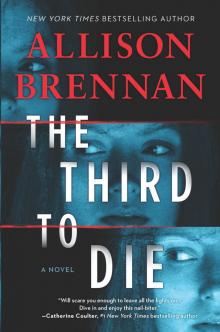 The Third to Die
The Third to Die Nothing to Hide
Nothing to Hide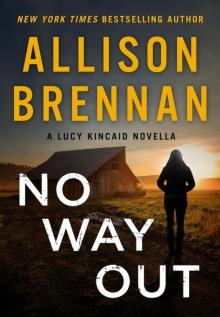 No Way Out
No Way Out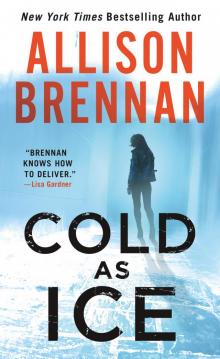 Cold as Ice
Cold as Ice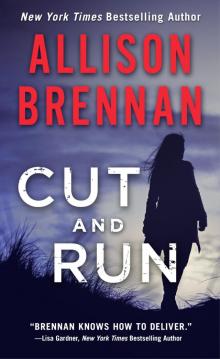 Cut and Run
Cut and Run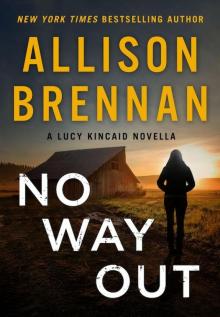 No Way Out (Lucy Kincaid Novels)
No Way Out (Lucy Kincaid Novels)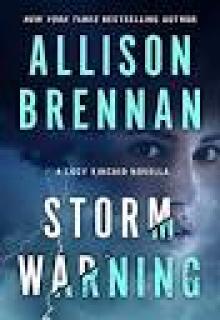 Storm Warning
Storm Warning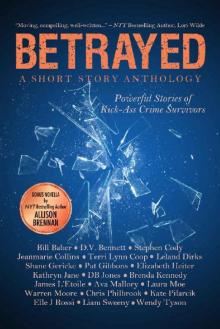 Betrayed: Powerful Stories of Kick-Ass Crime Survivors
Betrayed: Powerful Stories of Kick-Ass Crime Survivors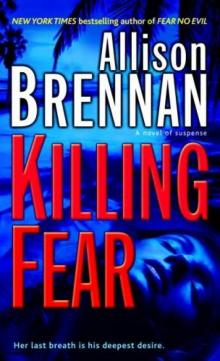 Killing Fear pb-1
Killing Fear pb-1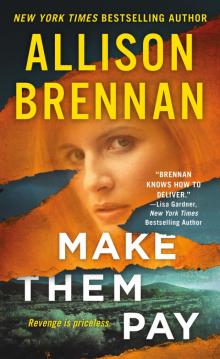 Make Them Pay
Make Them Pay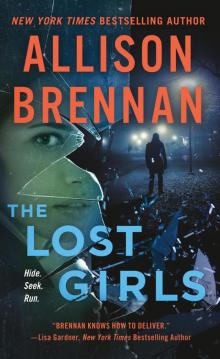 The Lost Girls
The Lost Girls Stalked
Stalked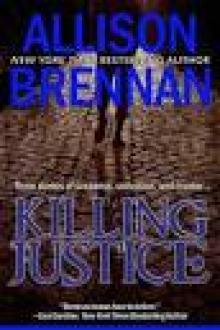 Killing Justice
Killing Justice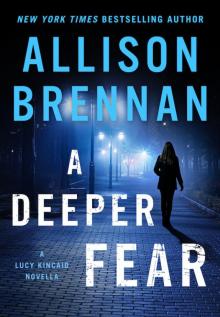 A Deeper Fear
A Deeper Fear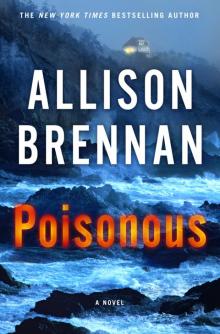 Poisonous
Poisonous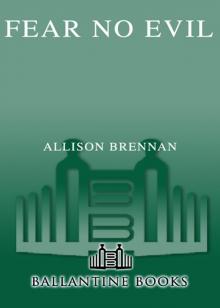 Fear No Evil
Fear No Evil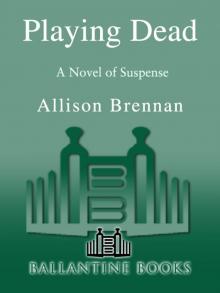 Playing Dead
Playing Dead Cold Snap
Cold Snap Vacation Interrupted
Vacation Interrupted Frosted (Moreno & Hart Mysteries)
Frosted (Moreno & Hart Mysteries)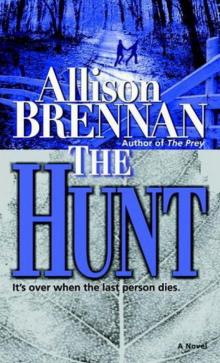 2 - The Hunt
2 - The Hunt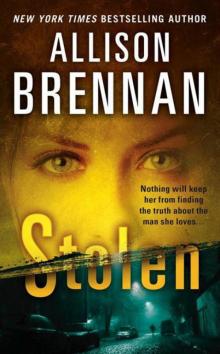 Stolen
Stolen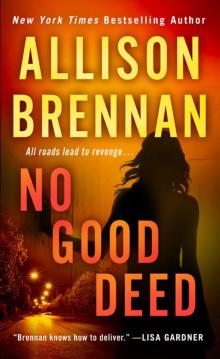 No Good Deed
No Good Deed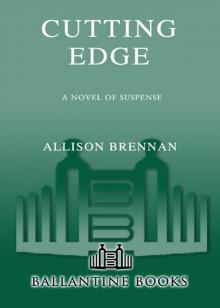 Cutting Edge
Cutting Edge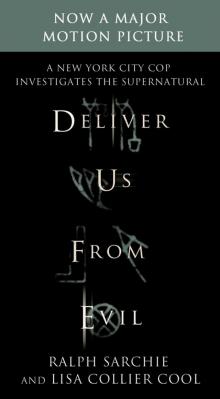 Deliver Us from Evil
Deliver Us from Evil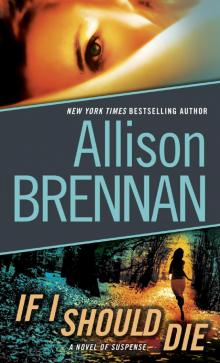 If I Should Die
If I Should Die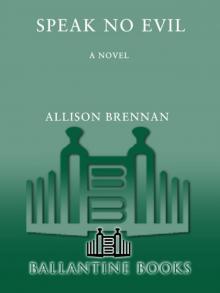 Speak No Evil
Speak No Evil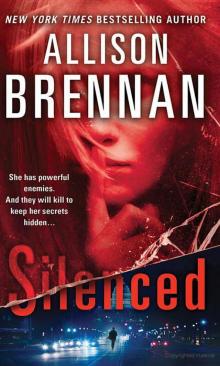 Silenced lk-4
Silenced lk-4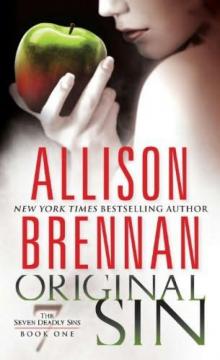 Original Sin sds-1
Original Sin sds-1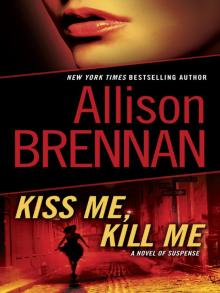 Kiss Me, Kill Me lk-2
Kiss Me, Kill Me lk-2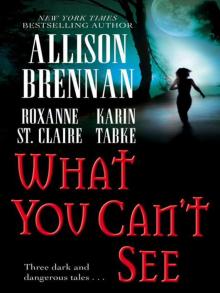 What You Can’t See
What You Can’t See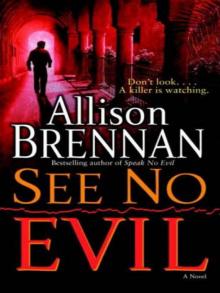 See No Evil
See No Evil The Prey
The Prey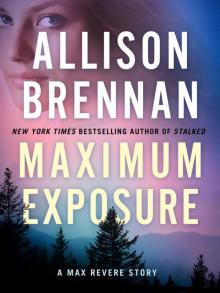 Maximum Exposure
Maximum Exposure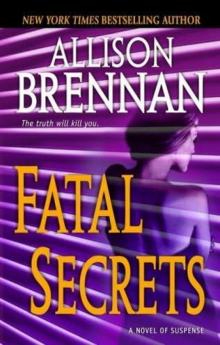 Fatal Secrets f-2
Fatal Secrets f-2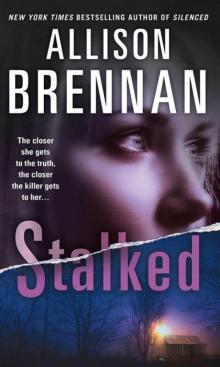 Stalked lk-5
Stalked lk-5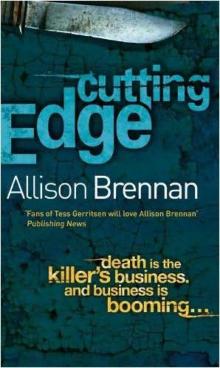 Cutting Edge f-3
Cutting Edge f-3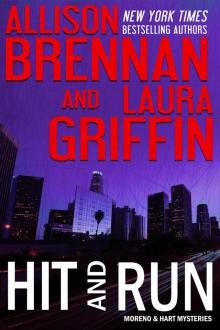 Hit and Run (Moreno & Hart Mysteries)
Hit and Run (Moreno & Hart Mysteries) Sudden Death f-1
Sudden Death f-1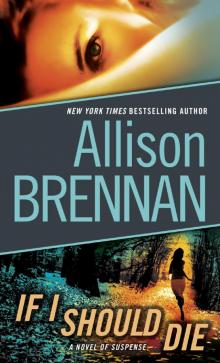 If I Should Die lk-3
If I Should Die lk-3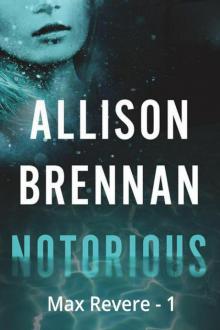 Notorious
Notorious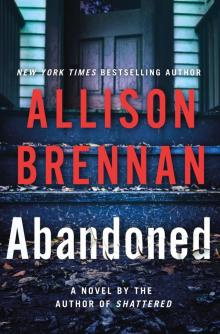 Abandoned
Abandoned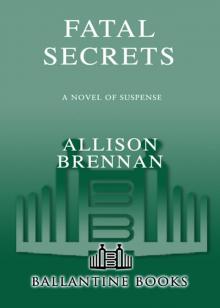 Fatal Secrets
Fatal Secrets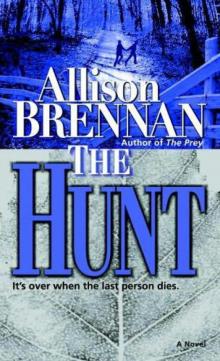 The Hunt
The Hunt Carnal Sin sds-2
Carnal Sin sds-2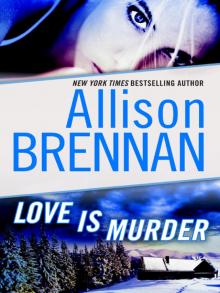 Love Is Murder
Love Is Murder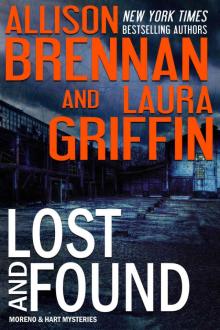 Lost and Found
Lost and Found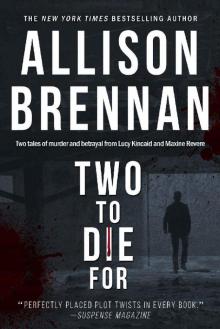 TWO TO DIE FOR
TWO TO DIE FOR Breaking Point
Breaking Point Best Laid Plans
Best Laid Plans Carnal Sin
Carnal Sin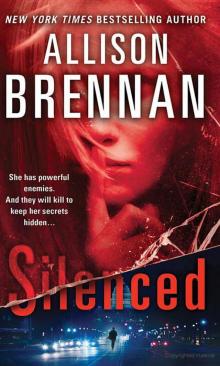 Silenced
Silenced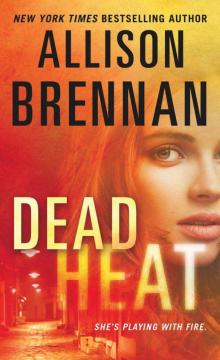 Dead Heat
Dead Heat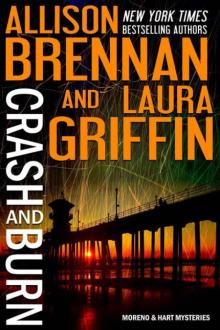 Crash and Burn
Crash and Burn Sudden Death
Sudden Death Lucy - 05 - Stalked
Lucy - 05 - Stalked Mortal Sin
Mortal Sin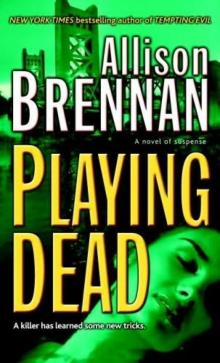 Playing Dead pb-3
Playing Dead pb-3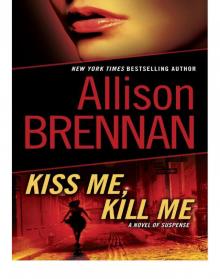 Kiss Me, Kill Me
Kiss Me, Kill Me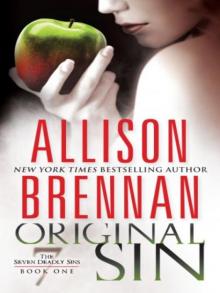 Original Sin: The Seven Deadly Sins
Original Sin: The Seven Deadly Sins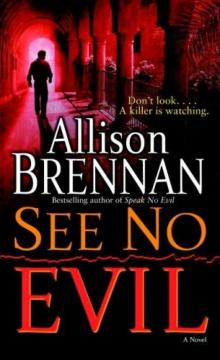 See No Evil e-2
See No Evil e-2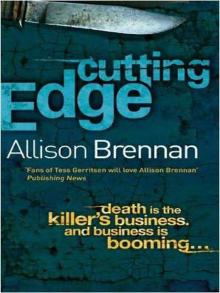 Cutting Edge: A Novel of Suspense
Cutting Edge: A Novel of Suspense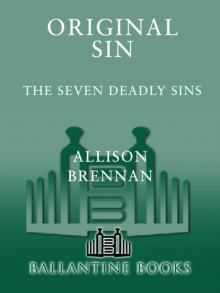 Original Sin
Original Sin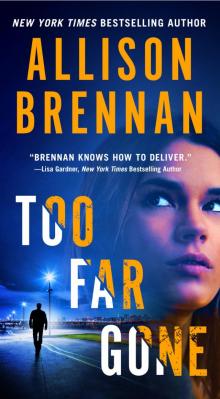 Too Far Gone
Too Far Gone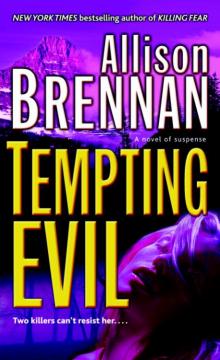 Tempting Evil
Tempting Evil Shattered
Shattered Killing Fear
Killing Fear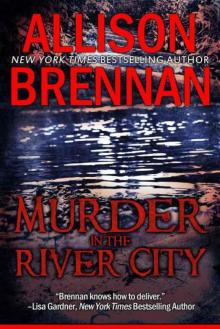 Murder in the River City
Murder in the River City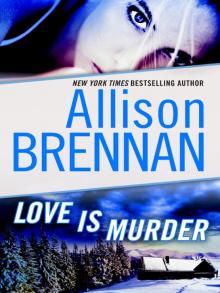 Love Is Murder (lucy kincaid)
Love Is Murder (lucy kincaid)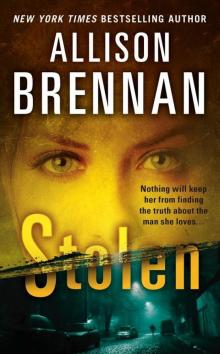 Stolen (Lucy Kincaid Novels)
Stolen (Lucy Kincaid Novels)